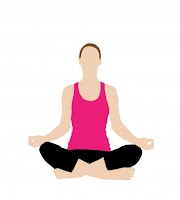Why Do I Feel High After Yoga?
Ever found yourself in a blissful state of calm after a yoga session, feeling as if you're floating on air? You're not alone. Many yoga practitioners report experiencing a heightened sense of well-being, often described as a "yoga high." In this article, we will delve into the science and spirituality behind why you might feel high after yoga, offering insights into the biochemical, physical, and mental changes that contribute to this euphoric state.
The Science Behind the Sensation
- Endorphins: Endorphins are neurotransmitters released by the brain, often referred to as "feel-good" chemicals. They act as natural painkillers and mood lifters. During an intense yoga session, especially during challenging asanas, the body releases these endorphins, contributing to feelings of happiness or euphoria post-practice.
- Anandamide: Another neurotransmitter, Anandamide, is sometimes referred to as the "bliss molecule." It plays a significant role in pain relief and overall happiness. Like endorphins, anandamide levels also rise during exercise, including yoga. This could be another biochemical reason for the "yoga high" you experience.
- Oxygenation: Yoga often places heavy emphasis on controlled, deep breathing, increasing the oxygen levels in your blood. This enhanced oxygenation can improve your mental clarity, alleviate stress, and contribute to the sensation of feeling high after yoga practice.
The Role of Breathwork (Pranayama)
- Anatomy of Breathwork in Yoga: Pranayama, the art of breath control in yoga, consists of various techniques designed to improve the breath's flow, rhythm, and depth. These methods are integral in harnessing life force energy (Prana), impacting both your physiological and psychological states.
- Types of Pranayama and Their Effects: Different types of pranayama yield different effects on your mental state. For instance, Nadi Shodhana (Alternate Nostril Breathing) aims to balance your mind, while Kapalbhati (Shining Skull Technique) is more energizing and invigorating.
- Breathing and Brain Waves: Breathwork can also influence brain wave patterns. Slower, deeper breathing is known to enhance alpha and theta brain wave activity, linked to states of relaxation and heightened creativity. This shift in brain wave activity can be another contributing factor to the feeling of being high after practicing yoga.
The Impact of Asanas (Poses)
- Physical Intensity and Its Effect on the Brain : Yoga asanas or poses require varying degrees of physical effort and concentration. When you engage in poses that challenge your body, it's not just your muscles that are at work. Your brain also releases neurochemicals like dopamine, which is linked to feelings of reward and pleasure. This rush of dopamine is another contributing factor to the "yoga high."
- Calmness Through Stillness: Restorative yoga poses such as Child’s Pose or Savasana (Corpse Pose) are less about physicality and more about mental relaxation. They induce a sense of calm and help you enter a meditative state. This quieting of the mind is another route to achieving that high feeling, albeit a less adrenaline-fueled one.
- Flow States: Certain types of yoga, like Vinyasa, require the seamless flow of one pose into another. This sequence engages your body and mind in such a way that you may experience what's known as a 'flow state,' a mental state where you are fully immersed in what you are doing. Flow states are characterized by an enhanced sense of focus and a loss of the sense of time, often accompanying feelings of euphoria or a natural 'high.'
The Spiritual Connection
In yoga philosophy, Dhyana (meditation) and Samadhi (a state of intense concentration achieved through meditation) are the final stages of the eight-fold path of yoga, known as Ashtanga. These states lead to a union of the individual soul with the universal soul, often described as enlightenment or a 'spiritual high.'
- Kundalini Awakening: In Kundalini Yoga, the aim is to awaken the dormant energy at the base of the spine. When this energy rises through the seven chakras, it can result in profound emotional, psychological, and spiritual experiences. Some liken Kundalini awakening to feeling a natural high, although it's essential to approach this practice with caution and under expert guidance.
- Modern Interpretations of Spiritual Elevation: In the West, the spiritual aspects of yoga have often been adapted to fit a more secular viewpoint. Yet even in these adapted forms, many find a deep sense of spiritual well-being after a yoga session. Whether this is attributed to divine connection or a deep state of inner peace, it plays into the overarching phenomenon of feeling high after yoga practice.
External Factors
- The Role of Environment: The setting in which you practice yoga can profoundly influence your emotional and psychological state. Whether it's a serene outdoor space or a dedicated yoga studio with mood-enhancing elements like soft lighting and aromatic incense, environmental factors can enhance your sense of well-being, contributing to that high feeling post-practice.
- Music and Soundscapes: Many yoga instructors incorporate music or natural sounds to create a tranquil ambiance. The right soundtrack can trigger the brain’s emotional centers, helping to elicit feelings of joy or calmness, thereby intensifying your post-yoga high.
- Group Dynamics: The communal aspect of a yoga class can also play a role. Social interactions and the shared experience of moving and breathing in a group can trigger the release of oxytocin, often called the "love hormone," which fosters feelings of trust, empathy, and well-being.
The Line Between Healthy and Harmful
- The Risk of Overexertion: While the aim is to reach a state of elevated well-being, it’s important to be aware of your body’s limitations. Overexerting yourself in challenging poses could result in physical harm, negating any positive emotional or psychological effects.
- Mental Health Considerations: For some individuals, the intense focus on inner experiences during yoga could potentially bring up unresolved emotional or psychological issues. It's crucial to approach the practice with self-awareness and perhaps consult healthcare professionals if yoga triggers emotional distress.
- Moderation is Key: Like any good thing, the emotional highs from yoga are best in moderation. Striking a balance between effort and ease is crucial for a sustainable and healthy yoga practice that continues to bring joy without any adverse effects.
Conclusion
The sensation of feeling high after yoga is a complex interplay of biochemical, physical, and psychological factors, further influenced by external elements like environment and group dynamics. From endorphins and dopamine to deep breathing and spiritual connections, various aspects contribute to this state of elevated well-being. While this yoga-induced euphoria has many benefits, it's essential to practice with self-awareness and moderation to ensure that your pursuit of a yoga high remains both healthy and fulfilling.







0 Comments